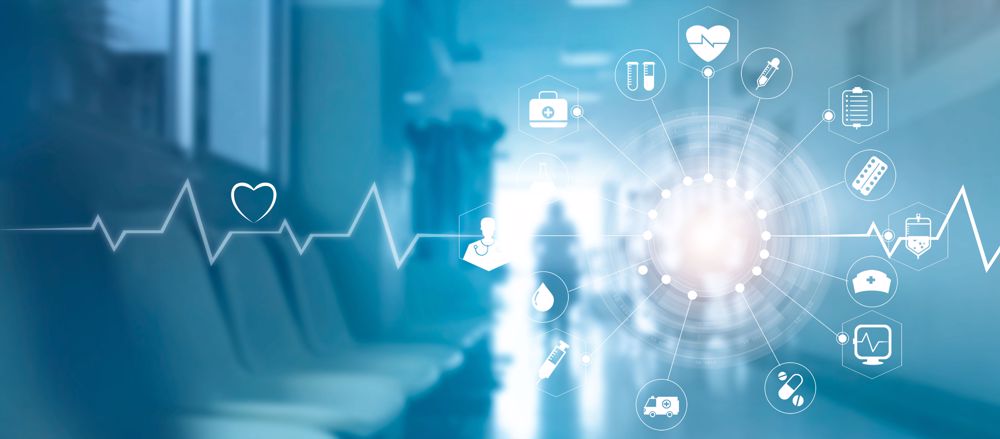Telehealth and telemedicine have exploded in popularity since the start of the COVID-19 pandemic. Anxiety around the public health crisis coupled with the increased need for remote services of all kinds sparked a major demand for telecare strategies and programs.
Healthcare professionals around the world have met the challenge and developed their own telehealth service. But moving forward, it is important for healthcare executives to define telehealth and telemedicine as they see fit for the success of their organization.
What is considered a telehealth solution?
Telehealth is a broad concept used mainly to denote any interaction between patients and healthcare providers in which a variety of different medical services, including education, prescription information and self-care advice, are deployed over a digital or telecommunications channel. It’s important to know that telehealth can include a number of other nonclinical services that don’t directly involve providers as well.
There are numerous different types of telecare, but they can be broadly divided into four main categories. These include:
- Live-video conferencing: The most widely used and well-known type, this involves the patient and healthcare provider communicating face-to-face via video conferencing.
- Asynchronous technology: Also known as the store-and-forward method, this is used to record detailed records of a patient encounter to send to specialists. This method is often used in rural areas where internet access might not be secure.
- Synchronous technology: Real-time, streaming images and medical data is passed simultaneously between the patient and remote provider.
- Remote patient monitoring (RPM): RPM is used to keep track of a variety of patient health data which is then sent to a healthcare professional in another location for review. This method is especially useful for elderly or chronically ill patients who require periodic checks.
- Mobile health: Mobile health, or mHealth, involves the use of mobile apps to allow users to monitor different aspects of their health, like counting their steps or tracking their caloric intake.
What is the difference?
Telehealth and telemedicine can often be used synonymously, but there are a number of key differences you should know about.
Telehealth
Telehealth is a broader term that can apply to any type of healthcare service or practice that utilizes digital or telecommunications technology. While this usually involves direct patient-to-provider interactions, it can also include the internal operations of the healthcare organization itself, like administrative meetings, training sessions and health education services.
Telehealth also includes any nonclinical, self-care practices that individuals undertake for themselves, like the use of mHealth apps to track their own healthcare goals and accomplishments.
Telemedicine
Telemedicine, on the other hand, services a more specific clinical purpose. It is used by healthcare organizations to provide clinical services to patients, including diagnosing and treating specific disorders, diseases and other ailments.
Telemedicine programs provide many benefits to patient and provider alike. They allow patients to access medical care services from multiple settings outside of the facility, such as the comfort of their own homes, which can reduce the taxing experience of traveling to a healthcare facility when sick. They also have the added value of using connected medical devices to help the providers gather quality clinical data on a patient, as if they were in-person with the patient.
What is telemedicine technology?
There are a few basic technological considerations you need to have in place to help guarantee a secure, high-quality telemedicine experience for your patients. These include:
Reliable internet connection: A reliable broadband connection is one of the basic components to quality telemedicine services. Typically between 2 and 5 Mbps is all you should need for most technology platforms today.
- Secure video platform: Next, you need a secure and encrypted video or digital platform to establish communication with patients. These can either be direct-to-consumer, meaning you contact patients directly through their home computers or smartphones, or through a computer you’ve already set up in a remote location.
- Integrated medical devices: The use of integrated medical devices within a video platform is a big differentiator of telemedicine from telehealth. Quality diagnostic data can be gathered from the medical devices during a consult, therefore providing a more clinically-based encounter
- Technology support: One of the important but too easily overlooked components of your telehealth platform is the use of dedicated technical support staff to ensure your internet connection remains secure and stable and that any problems that may arise can be quickly resolved.
Deploying these tools at your healthcare organization
During the COVID-19 pandemic, the U.S. Department of Health and Human Services announced that anyone eligible for Medicare could receive reimbursement for utilizing a telehealth program. Following suit, state Medicaid programs and many private insurers have also expanded their coverages to include telehealth services.
The specifics of each state’s Medicaid telehealth policy differ slightly, so it’s important to check your state’s policy to understand how it applies to your practice. Many state governments have already announced they will continue to cover telehealth services even after the pandemic ends.
Get started with AMD
If you’re ready to expand your services through telemedicine and telehealth, you need an experienced technology partner on your side to ensure you’re able to roll out an effective, telemedicine program.
AMD Global Telemedicine has been a pioneer of telemedicine and an industry leader in telehealth solutions for the past 30 years. If you’re interested in learning more about AMD, our products or telemedicine technologies, contact us today and find out how we can help improve your telehealth and telemedicine programs.






